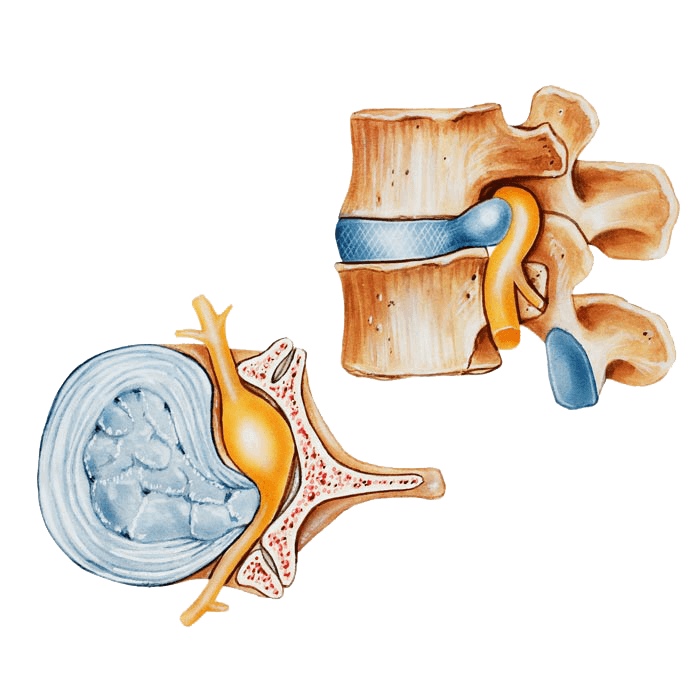Lumbar Discectomy
Lumbar Discectomy in Southlake

What to Expect
The patient is given general anesthesia while this treatment is carried out in a sterile operating room. The damaged disc in the lumbar region will be exposed by an incision made by your surgeon. To expose the herniated disc, a little piece of bone and the surrounding ligament may be removed. The discs and the nerves are viewed under magnification by your doctor. By increasing the view of the surgical site, this reduces injury to the nerves and nearby tissues. A specialized instrument is then used to gently move the spinal nerve root in order to access the afflicted disc, and the ruptured or herniated disc is subsequently extracted. Additionally, any loose disc pieces are taken out. Sometimes these pieces are scarred into the nerve and can’t be safely removed. In that case the nerve is decompressed by the removal of nearby bone and ligament. The surgical site is then sutured closed after being irrigated with an antibacterial solution.
You are advised to avoid tasks that require bending, lifting, and prolonged sitting for six weeks after surgery. Physical therapy will be necessary for your recovery, during which you will learn specific exercises to increase the strength and flexibility of the muscles that surround your spine. Lumbar discectomy, like all surgical treatments, may lead to complications. These include infection, nerve damage, spinal fluid leak, persistent pain, and anesthetic issues.

